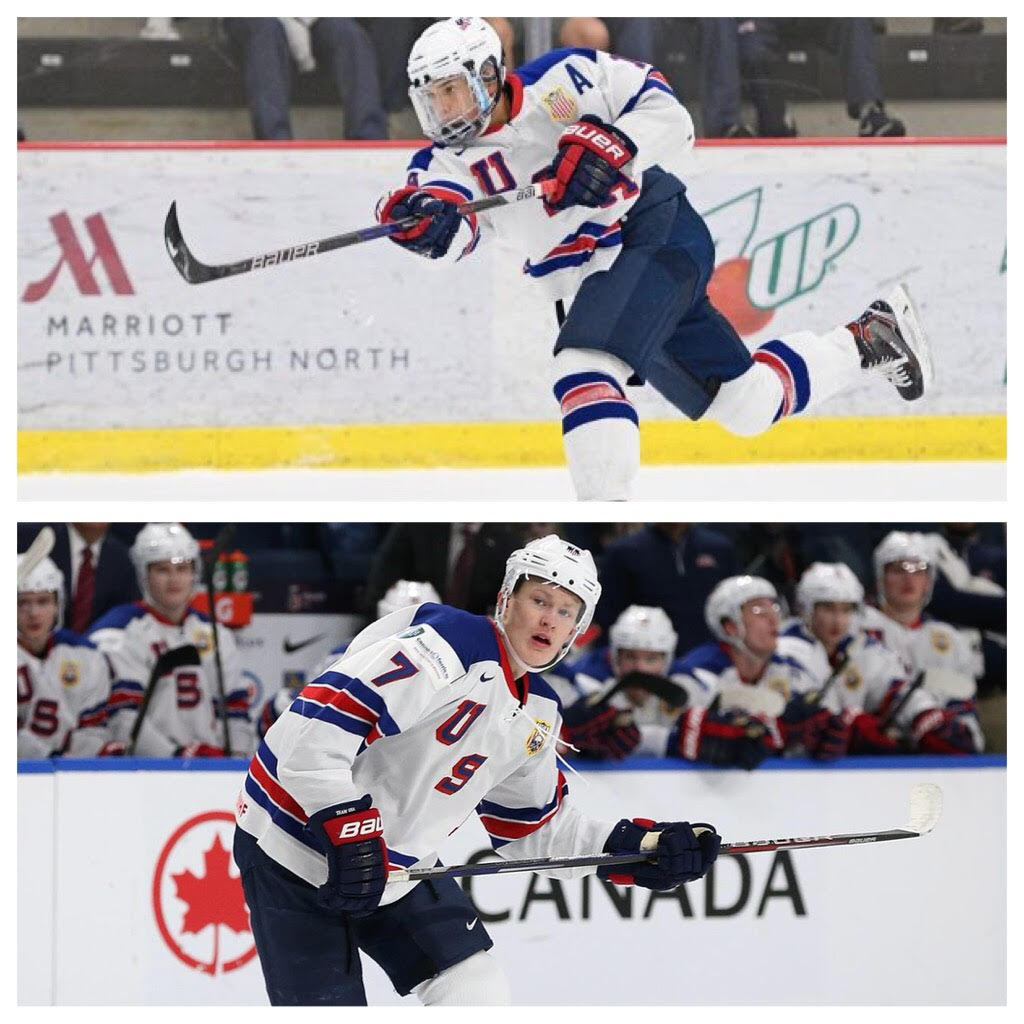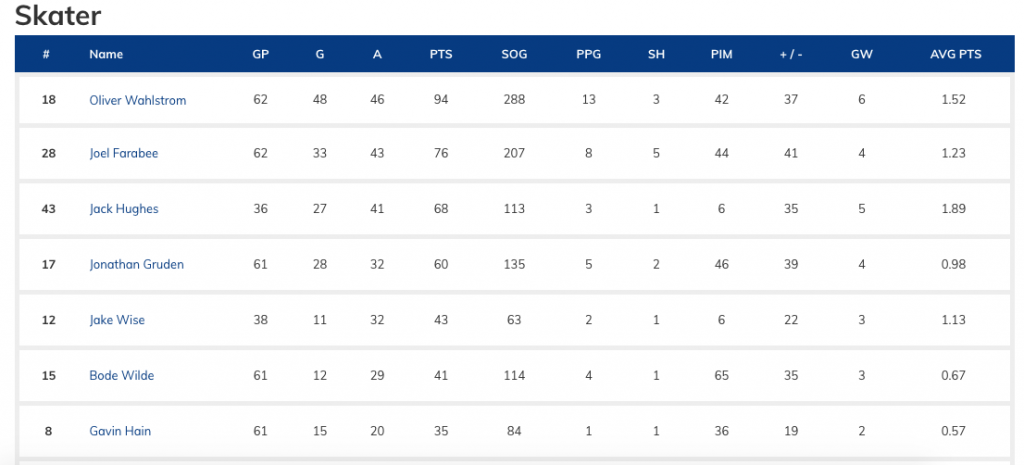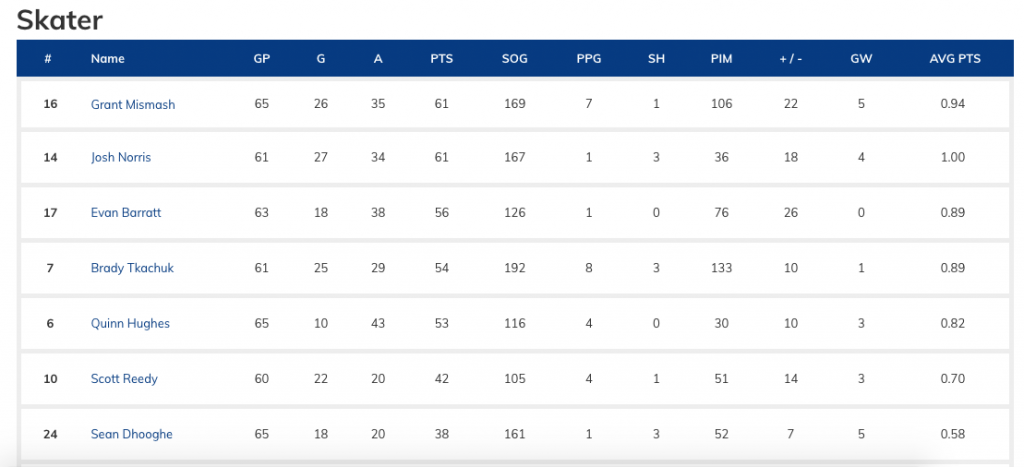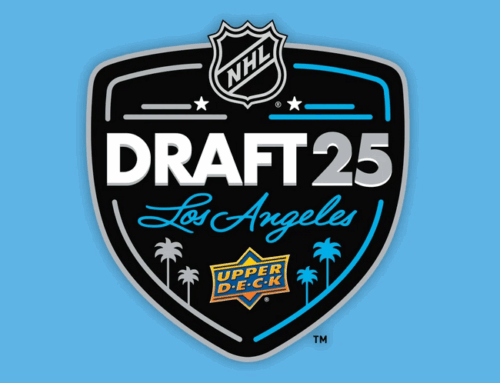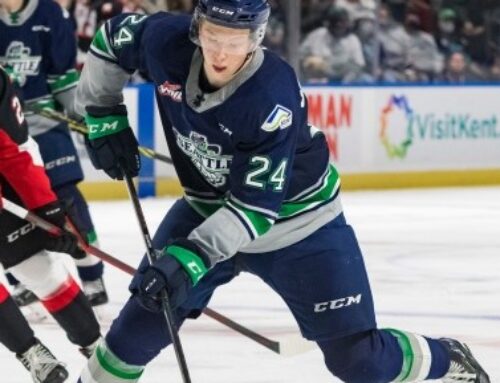Prospect Ramblings: Brady Tkachuk vs Oliver Wahlstrom
Cam Robinson
2018-05-18
In preparation for the NHL Entry Draft, I’ve been breaking down mini-battles on the draft boards. Earlier in the season, I took a look at the consensus top two forwards in this draft class – Andrei Svechnikov vs Filip Zadina. I followed that up with a comparison of Quinn Hughes vs Adam Boqvist. More recently, I looked at the next wave of defenders in a three-man battle between Ty Smith vs Evan Bouchard vs Noah Dobson.
This week, I’ll be taking a look at two American born wingers who are jostling for position as the third forward off the board. This one has been percolating for a while.
I’ve long been a staunch advocate of Wahlstrom and his high-end offensive upside. Conversely, I’ve been a vocal dissident of Tkachuk and those who evaluate him as a top-five talent. This piece will try and avoid those built-in biases when displaying the metrics. However, the conclusions that are drawn are likely to follow that train of thought.
The Numbers
|
Statistic |
Oliver Wahlstrom (USNTDP) |
Brady Tkachuk (NCAA) 2017-18 |
Brady Tkachuk (USNTDP) 2016-17 |
|
Birthdate |
2000-06-13 |
1999-09-16 |
1999-09-16 |
|
Height |
6’1 |
6’3 |
6’2 |
|
Weight |
205 |
196 |
194 |
|
Games Played |
62 |
40 |
61 |
|
Goals |
48 |
8 |
25 |
|
Assists |
46 |
23 |
29 |
|
Total Points |
94 |
31 |
54 |
|
Points-Per-Games |
1.51 |
0.78 |
0.89 |
|
Shots/GP |
4.65 |
3.28 |
3.15 |
|
Shooting % |
16.67% |
6.10% |
13.02% |
|
PPG |
13 |
3 |
8 |
|
PIM/Gm |
0.68 |
1.52 |
2.18 |
For this piece, I’ve decided to provide Tkachuk’s stats from his most recent freshman season in the NCAA as well as his draft-minus one campaign from the USNTDP. This is due to a couple of reasons. Firstly, Tkachuk is as old as a player can be for this class. He missed out on the 2017 draft by a single day. This means that his 2016-17 season had him playing in the same league as Wahlstrom did this year and he was a mere three months older than Wahlstrom was when he produced his draft-eligible numbers.
While it’s important to note that Tkachuk was one of the youngest players in the NCAA this year, his 2016-17 campaign is more easily comparable to Wahlstrom’s 2017-18 season. Both sets of data help to provide the entire picture.
Something to note is that Tkachuk wasn’t given the benefit of playing on a U18 squad that featured Jack Hughes or Joel Farabee-level linemates. But he was given all the prime ice he could handle.
As mentioned, Wahlstrom played the lion’s share of his campaign next to Farabee and Hughes at even-strength. They added Jake Wise to the four forward power play. Three of those players will be first-round selections with a very strong chance of them all being in top 15. Wise is a top 50 lock.
Wahlstrom led the team in goals, points and shots. He trailed only Hughes for points-per-game. The 2017-18 version of the U18 squad scored 281 goals during the regular season and tournament play. Wahlstrom factored in on 33.4 percent of those goals.
Meanwhile, Tkachuk played with some combination of Evan Barrett, Josh Norris and Grant Mismash in 2016-17. Norris (19th overall to SJ) was the only player taken in round one from that group. Tkachuk was boosted by having a world-class talent in Quinn Hughes creating offense from the back-end though.
Tkachuk led that team in goals and shots while finishing fourth in total points. The 2016-17 U18 team recorded 266 goals during the regular season and tournament play. Tkachuk factored in on 20.3 percent of those goals.
As a nice little comparison bonus, Wahlstrom suited up for 20 games with the U18’s during 2016-17 as a 16-year-old. He recorded 10 goals and 15 points during that period. Just a tad behind Tkachuk’s point pace despite being nearly a year younger. Additionally, his 0.5 goals-per-game output sat as the team lead – albeit in a small sample.
Skating
Tkachuk is a big man who gets around the ice just fine for his size. His speed shouldn’t be an issue at the next level. He uses a long, fluid stride at full speed and has quick acceleration that allows him to get to pucks in the corners ahead of his competition.
Wahlstrom employs a similarly long stride in full flight. His foot speed isn’t at an elite level but it shouldn’t pose an issue. He has the ability to cut inside on a dime and attack the danger areas.
Shot
Wahlstrom scores his goals from all over the ice. His blistering release on the power play will immediately demand respect from NHL penalty killers. However, his ability to generate at even-strength will be challenged. The 17-year-old is able to bull his way into high-danger scoring areas due to his speed and strength, but that will become increasingly more difficult at the next level. Regardless, his shot will make him a threat to score in all situations.
The dual-citizen (Swedish and American) is a volume shooter. He’s demonstrated that at every level and every international tournament. Never was that more evident than at the U18 Worlds last month where to led all players in shots with a jaw-dropping 45 over the course of seven contests (6.42-per-game). That was a new tournament record. This is a player with legitimate 40-goal upside.
{youtube}eX98V5mqjfQ{/youtube}
If we’re looking for a comparable, Brock Boeser scored 35 goals in 57 USHL games in his draft season. At the same age, Wahlstrom’s release is at least on par.
Brady Tkachuk is no slouch when it comes to finishing either. He struggled to find the back of the net as a freshman with BU but has a history of converting on a sustainably high number of his attempts. Tkachuk will likely make his butter from the hash marks in as the net-front presence on a power play.
Tkachuk owns a heavy release and also a nice touch. He has the ability to take something off it when in tight but finds the opening. A good ability to have.
Passing
Both players see the ice well and can distribute to their mates with creative and accurate passes. Additionally, both players have had a history of playing the middle of the ice. However, at this stage of development, it would appear they are each destined for the wing.
Hands
Another category and another close call. Both players have the ability to cut inside and stickhandle through the triangle of a defender. Down low, the edge goes to Tkachuk. While on the rush, we may lean Wahlstrom.
Conclusion
Tkachuk brings more than just counting stats to the equation. He’s a physical player who creates space down low and owns soft hands in tight. Those traits will transfer extremely well to the next level. He displayed his ability to elevate his play next to premier talent when he and Casey Mittelstadt shredded the World Juniors this past winter.
{youtube}gfptxni0CiA{/youtube}
Like his brother, Matthew, Brady is capable of racking up heavy penalty minutes through his abrasive-style of play. That style also lends itself well to drawing penalties and putting his team on the man-advantage. His defensive position is mostly sound, but can still be cleaned up.
However, looking at the figures above paints a fairly accurate photo of which player possesses the higher offensive ability. Wahlstrom shoots the puck with far more frequency, converts on a higher percentage and number of shots, and is more effective on the power play.
It’s been reported that Wahlstrom will de-commit from Harvard in the next few weeks and decide to attend either Michigan or BC this fall. This is likely due to the strong possibility that he’ll be a one or two-year college player. Harvard skaters often do their best to play the full four. It has also been reported that Tkachuk will return to Boston University for a sophomore campaign.
It’s conceivable that both will enter the NHL in the fall of 2019.
These are two players that should have long and fruitful careers. They should each impact the game at a high-level but in different ways.
If I’m drafting one of them today though, its Oliver Wahlstrom
Report Card
Skating: Wahlstrom
Passing: Draw
Hands: Tkachuk
Shot: Wahlstrom
NHL Readiness: Draw
**
That’s all for this week. Thanks for reading and feel free to follow me on Twitter @CrazyJoeDavola3


